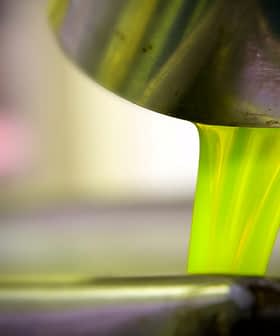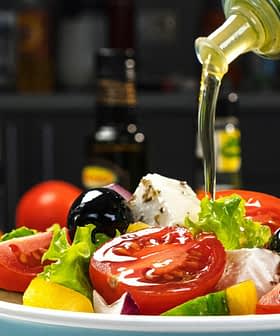
Twenty-first Century science and technology have ushered in many improvements in the way people live and work and go about their daily life. Medical science has also through research found cures for many diseases and some have been eliminated totally through extensive immunization and other preventive measures. But the modern urban lifestyle appears to have given birth to a slew of health problems, like heart disease, diabetes, stress and others, that are now the primary causes of people dying before their time.
Lifestyle Diseases in India
In India, the scenario is highly alarming as the disease profile is changing at a rapid pace. India has been identified by the World Health Organization (WHO) as one of the countries that will have a seriously high number of these lifestyle problems in the very near future. These diseases are now affecting a far younger section of the population, as work-related stress and personal dilemma increase with the changing lifestyle trends in modern India. The segment at risk has moved from the 40+ group to perhaps 30+ and sometimes even younger. India has already gained the dubious distinction of being the diabetes capital of the world and now it is fast emerging as the hub of a group of ailments, often fatal, termed lifestyle diseases. A largely sedentary lifestyle together with a fat-based diet and alcohol consumption is the primary cause of these diseases. The reputed All India Institute of Medical Sciences and Max Hospital have conducted a joint study that reveals the increasing incidence of hypertension, obesity and heart disease especially among the young, urban population.
The Alarming Scenario
Studies have revealed a critical state of affairs in the country, with much more to come.
Heart Disease
- India has the highest number of cardiac patients: 10% of the population is affected
- Heart Disease will be the single greatest ‘killer’ in India by 2015 (WHO).
- Heart attacks kill one in every 10 Indians
- 50 million people in India suffer from heart problems and the number is expected to double by 2010.
- The highest incidence of growth is among young executives: 1 of 8 is under 40 years.
- These heart attacks among young executives is 10 years ahead of the global average and prevention measures need to be initiated right in the early 20s.
Obesity
- 31% of urban Indians are either overweight or very obese
- Being obese can triple the risk of heart disease
Diabetes
- India has one of the highest numbers of people suffering from diabetes in the world, as many as 30 million and growing by the day.
Stress/ Hypertension/Cholesterol
- Hypertension and work-related stress are responsible for more than 50% of heart ailments
- 100 million people suffer high blood pressure
- Two out of three employees are stresses out at the workplace
- Over 40% of urban Indians have high lipid levels (cholesterol and triglycerides) that are the major risk factors for heart disease
Why Olive Oil?
 In this depressing scenario, the only way out is to lead a healthier life, modify one’s diet and incorporate exercise and relaxation into the daily routine. This would help mitigate the risk factors for most of the lifestyle problems that cause these major diseases.
In this depressing scenario, the only way out is to lead a healthier life, modify one’s diet and incorporate exercise and relaxation into the daily routine. This would help mitigate the risk factors for most of the lifestyle problems that cause these major diseases.
Indian cuisine in all its diversity utilizes a wide range of spices and is usually cooked in oil. The common cooking oils are sunflower, mustard, sesame and groundnut. Olive oil is rich in oleic acid, which is a monounsaturated fatty acid (MUFA) and consumption of MUFA in reasonable amounts is considered beneficial for cardiovascular health. This is because MUFA has the best lipid profile with lower LDL (bad) and higher HDL (good) cholesterol. But while all types of olive oil are good sources of MUFA, extra virgin olive oil derived from the first pressing of the olives has the highest levels of antioxidants, particularly vitamin E and phenols.
The beneficial effects of olive oil do not end there; apart from its high MUFA content, it also has a high level of antioxidants. Various studies have revealed that the MUFA content and the antioxidants in olive oil provide substantial protection against heart disease by effectively controlling the LDL (bad) and elevating the HDL (good) cholesterol levels in the body. No other oil that is naturally produced contains such a high amount of MUFA as olive oil. People who consumed 25 ml of virgin olive oil daily for just one week in a study revealed less oxidation of the LDL cholesterol and much higher amounts of antioxidant compounds, especially phenols, in the blood.
Olive Oil’s Benefits for Indians
It is widely known that the Mediterranean diet is healthy with its liberal use of olive oil and perhaps it is time that Indians duplicated this in their own dietary habits. Olive oil is considered the healthiest cooking medium all over the world and for very valid reasons:
Heart Disease: Olive oil is rich in monounsaturated fat and antioxidants like chlorophyll, carotenoids and vitamin E. A compound in olive oil called oleuropein has been identified through scientific studies, which prevents LDL (bad) cholesterol from oxidizing in the body. This is the element that adheres to the walls of arteries as plaque forming blockages and is the prime cause of heart attacks. We can therefore say with certainty that if Indians use olive oil as their primary cooking medium, blood pressure would be lowered and reduce the risk of heart attacks.
Diabetes: Diabetic patients or those who are at risk for this disease are advised by their doctors to follow a diet low in fat and rich in carbohydrates. The addition of olive oil can significantly enhance the blood sugar controlling properties of such a diet, besides lowering the levels of triglyceride. Many people who have diabetes have high triglyceride levels that substantially increase their risk of heart disease.
Olive Oil and Indian Cooking
There is a general misconception among Indians that olive oil is not suitable for Indian cooking. Olive oil has always been used for massage and for facials and, for most Indians, it still falls in the category of esoteric items that enhance the skin and hair. Indian cooking being itself very flavorful, there is a fear that olive oil may overwhelm the nuanced aromas of the varied cuisines of the country.
Can Indian food be cooked in olive oil? When this question was put to the renowned Indian chef and writer Sanjeev Kapur at an olive oil promotional event organized by International Olive Council in Delhi in 2007, his response was clear and categorical. “Of course it can, that’s a no brainer”, he said. In his latest book ‘Cooking with Olive Oil’ Kapur has addressed all the concerns of Indians regarding using olive oil as a cooking medium. He has also shown how the most traditional Indian dishes can be made with olive oil, with absolutely no difference to their taste or flavor.
The good news is that the demand for olive oil has been steadily increasing in the last few years due to the very legitimate concerns about health and disease. The economic and social globalization has brought this consciousness to the forefront and one can hope that olive oil can make all the difference to the health scenario in India in the very near future.








